Creating videos used to mean hours in front of editing software, piecing together clips, adding effects, and tweaking audio. But in 2025, AI video generators have flipped the script, letting anyone—from solo creators to big marketing teams—whip up professional-looking content in minutes. These tools harness advanced algorithms to turn simple text prompts, images, or scripts into dynamic videos, complete with realistic movements, voiceovers, and even lip-syncing. Whether you’re crafting short social media reels, training modules, or full-blown ads, the right AI video maker can save time and spark creativity. I’ve rounded up 12 standout options based on their real-world performance, ease of use, and innovative features. Let’s break them down.
1. OpenAI Sora
Sora, baked into OpenAI’s ChatGPT ecosystem, is like a magic wand for turning text prompts into cinematic snippets. Picture typing “a neon-lit cityscape with flying cars at dusk” and getting a 15-second clip that feels straight out of a sci-fi blockbuster. Sora’s upgrades—remix tools and multi-shot sequencing—make it a favorite for creators brainstorming music videos, teasers, or concept reels. It’s less about long-form editing and more about sparking big ideas fast.
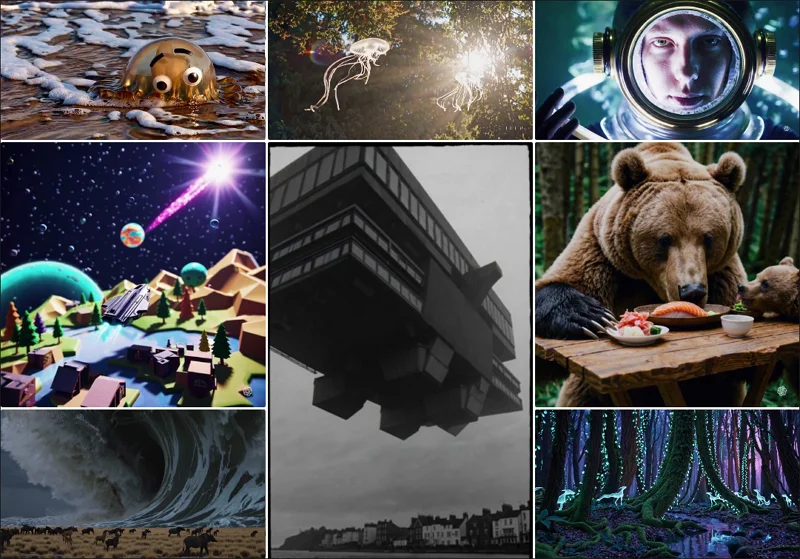
Key Features:
- Text-to-video generation up to 15 seconds.
- Image-to-video remixing for consistent styles.
- Storyboard tools for planning multi-scene projects.
- High-definition output with no watermarks.
Pros:
- Stunningly realistic visuals, especially for landscapes or abstract scenes.
- Seamless ChatGPT integration for intuitive prompting.
- Ideal for quick creative sketches or pitch videos.
Cons:
- Limited to short clips (15 seconds max).
- Character consistency can wobble in complex sequences.
- Requires ChatGPT subscription for access.
Subscription Plans:
- ChatGPT Plus: $20/month (basic access, limited credits).
- ChatGPT Pro: $200/month (unlimited high-res generations, advanced features).
Best For: Filmmakers and content creators needing quick, high-quality concept videos.
2. Google Veo 3
Google’s Veo 3 is a powerhouse for creators who want polished videos without the fuss. It blends text or image prompts with native audio generation, producing clips that feel ready for YouTube or Instagram right out of the gate. Its improved physics engine nails details like rippling water or swaying trees, and integration with tools like Canva makes it a dream for design-heavy projects. Think product demos, social ads, or b-roll for vlogs.
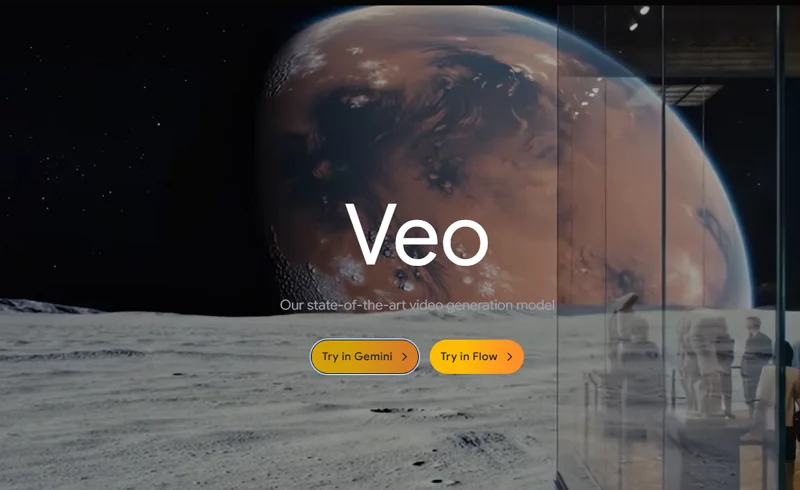
Key Features:
- Audio-inclusive video generation with lip-sync.
- Scene extension for longer clips (up to 30 seconds).
- Advanced camera controls (pans, zooms, tilts).
- 1080p output with customizable aspect ratios.
Pros:
- Lightning-fast rendering for tight deadlines.
- Realistic motion and sound sync for professional polish.
- Free credits let you test without committing.
Cons:
- No frame-by-frame editing for granular control.
- Occasional quirks in character movements.
- Watermarks on free and lower-tier plans.
Subscription Plans:
- Free: Limited credits, watermarked.
- Google AI Pro: $19.99/month (1,000 credits, 1080p).
- Google AI Ultra: $249.99/month (12,500 credits, no watermarks).
Best For: Social media marketers and YouTubers needing quick, polished content.
3. Runway Gen-4
Runway Gen-4 is the Swiss Army knife for filmmakers and animators who crave creative control. Its motion brushes let you animate specific parts of a scene—like making a car zoom while the background stays still. Features like Aleph (for tweaking props or weather) and Act Two (for blending real actors into AI scenes) have made it a go-to for music videos, short films, or experimental ads. It’s not the easiest to master, but the results are worth it.
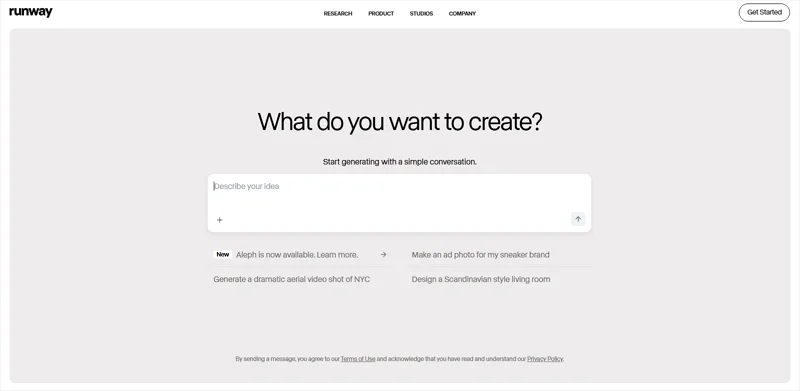
Key Features:
- Motion brushes for selective animation.
- Frame-by-frame AI editing and inpainting.
- Act Two for integrating live actors.
- Supports text-to-video and image-to-video.
Pros:
- Unmatched creative flexibility for pros.
- High-quality cinematic output.
- Active community with tutorials and templates.
Cons:
- Steep learning curve for beginners.
- No built-in audio generation.
- Demands powerful hardware for complex projects.
Subscription Plans:
- Free: 125 credits, limited features.
- Standard: $15/month (625 credits, no watermarks).
- Pro: $35/month (2,000 credits, custom voices).
Best For: Filmmakers and animators tackling stylized or experimental projects.
4. Kling AI 2.0
Kling AI, from Kuaishou, is a hidden gem for creators who want realistic visuals with minimal effort. It excels at natural elements—think crashing waves or bustling crowds—and its 2025 update (version 1.6) boosts clarity and color vibrancy. Features like lip-sync and virtual try-ons make it versatile for ads or social media, and its creativity slider lets you dial up or down the AI’s artistic flair.
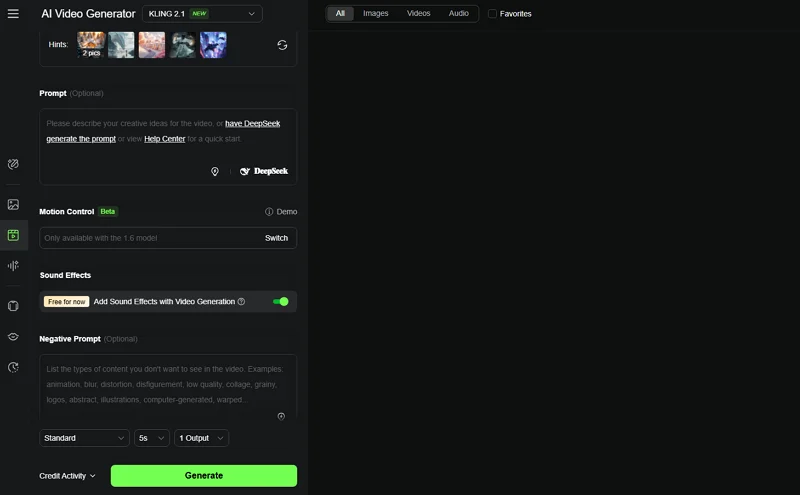
Key Features:
- Lip-sync and virtual try-on capabilities.
- Creativity slider for balancing prompt accuracy.
- One-click scene extensions (up to 3 minutes).
- 1080p output with image-to-video blending.
Pros:
- Gorgeous motion for natural or dynamic scenes.
- Cost-effective with free image previews.
- Reliable for complex prompts.
Cons:
- Slower rendering during peak usage.
- Limited free plan features.
Subscription Plans:
- Free: Daily credits, watermarked.
- Standard: $5/month (660 credits, pro features).
- Premium: $20/month (2,000 credits, priority rendering).
Best For: Content creators focused on realistic visuals for ads or social media.
5. Synthesia
Synthesia is the king of avatar-driven videos, turning scripts or presentations into engaging clips with lifelike digital presenters. It’s a lifesaver for corporate training, e-learning, or marketing videos, supporting over 140 languages. New features like multi-avatar dialogues and improved dubbing make it feel like a virtual studio, perfect for global teams needing polished, accessible content.
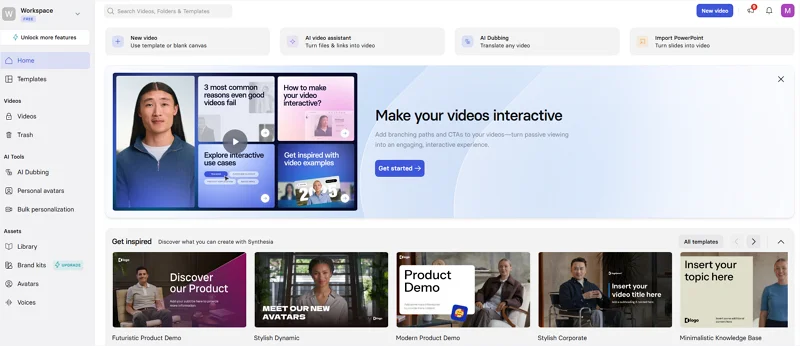
Key Features:
- 230+ avatars with natural gestures.
- Document-to-video conversion (PDFs, slides).
- Voice cloning and 1-click translations.
- Team collaboration tools.
Pros:
- Studio-quality output with zero filming.
- Multilingual support for global reach.
- Intuitive for non-editors.
Cons:
- Avatars can feel stiff for casual content.
- Limited to abstract or artistic videos.
Subscription Plans:
- Free: 3 minutes/month, watermarked.
- Starter: $29/month (10 minutes, 1080p).
- Creator: $89/month (30 minutes, API access).
- Enterprise: Custom pricing.
Best For: Educators and corporate teams creating training or explainer videos.
6. Hailuo MiniMax
Hailuo MiniMax has surged in popularity for its sharp, prompt-driven videos that stick closely to your vision. Feed it a script or idea, and it delivers crisp 720p clips in seconds. Its Director Mode lets you tweak scenes like a pro, and voice cloning adds a personal touch. It’s a great pick for small businesses or creators needing quick demos or teasers.

Key Features:
- AI voice cloning and lip-sync.
- Director Mode for scene adjustments.
- Fast 6-second clip generation.
- Character reference for consistent visuals.
Pros:
- Speedy and high-quality output.
- Daily free credits for testing.
- Flexible for personalized content.
Cons:
- Limited to short clips (6-10 seconds).
- Interface still feels like a work in progress.
Subscription Plans:
- Free: Limited credits with login.
- Base: $9.99/month (1,000 credits, no watermarks).
- Pro: $29.99/month (3,000 credits, advanced features).
Best For: Small businesses and creators needing fast, customized clips.
7. Luma Dream Machine
Luma’s Dream Machine is a filmmaker’s ally, turning text or images into cinematic shorts with realistic physics. Want a storm-swept mountain or a futuristic city? It nails the details. Its update slashed rendering times and improved multi-shot coherence, making it ideal for storytellers testing epic concepts without a Hollywood budget.

Key Features:
- Physics-based motion for realistic effects.
- Multi-shot video generation.
- 120-frame clips in minutes.
- Image-to-video consistency.
Pros:
- Stunning visuals for cinematic ideas.
- No need for precise motion prompts.
- Efficient for complex scenes.
Cons:
- High discard rate for off-target outputs.
- Slower on intricate prompts.
Subscription Plans:
- Free: Limited credits.
- Lite: $7.99/month (basic features).
- Standard: $23.99/month (advanced tools).
- Pro: $79.99/month (high-volume credits).
Best For: Filmmakers and visualizers crafting cinematic shorts.
8. Pika 2.2
Pika 2.2 brings a playful vibe to video creation, morphing images or text into animated clips with preset actions like zooms or spins. It’s a hit for social media creators chasing trends, and its frame-morphing upgrades ensure smoother transitions. Think quick memes, Reels, or YouTube Shorts with minimal effort.
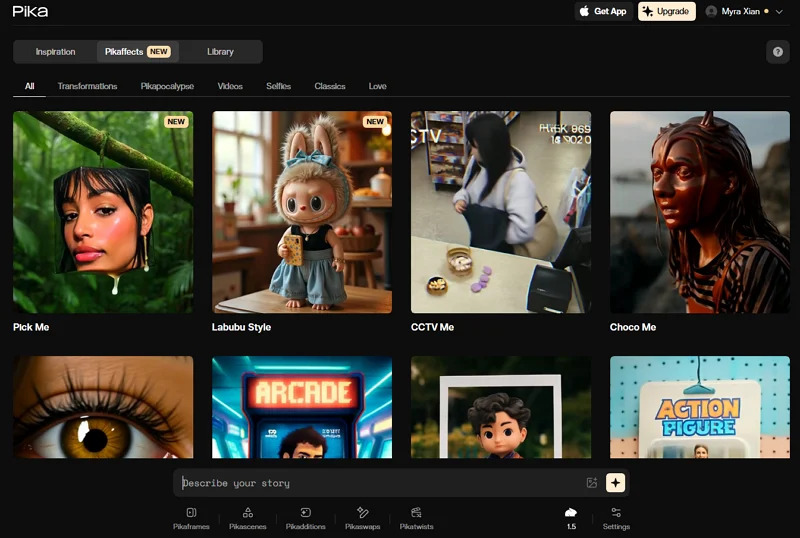
Key Features:
- Image-to-video morphing with actions.
- Social media aspect ratio presets.
- Camera control for dynamic shots.
- Fast iteration for creative tweaks.
Pros:
- Fun and fast for social media.
- Beginner-friendly interface.
- Great for trend-driven content.
Cons:
- Less realistic than high-end tools.
- Inconsistent results on complex prompts.
Subscription Plans:
- Free: Limited trial.
- Basic: $10/month (core features).
- Pro: $28/month (advanced tools).
Best For: Social media creators and influencers.
9. HeyGen
HeyGen specializes in avatar-driven videos for corporate needs, turning scripts into polished promos or internal comms. Its lip-sync improvements and 700+ voice options in 175+ languages make it a global marketing staple. It’s like having a virtual spokesperson who never flubs a line.
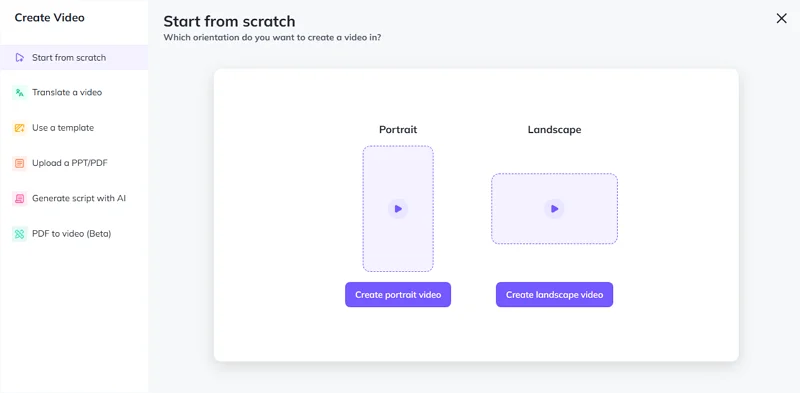
Key Features:
- 100+ avatars with dynamic expressions.
- Auto-dubbing with precise lip-sync.
- Custom templates for branding.
- Multilingual voiceovers.
Pros:
- Professional polish for corporate use.
- Strong localization for global campaigns.
- Regular feature updates.
Cons:
- Avatar movements can feel robotic.
- Expensive for high-volume users.
Subscription Plans:
- Free: Limited, watermarked.
- Creator: $24/month (30 minutes, 4K).
- Business: $89/month (advanced features).
Best For: Corporate marketers and internal communicators.
10. InVideo AI
InVideo AI is a content marketer’s dream, transforming articles, scripts, or ideas into videos with a massive template library. Its AI scripting upgrades let you generate news-style clips or social posts in minutes, perfect for small businesses or bloggers needing consistent output.

Key Features:
- 5,000+ customizable templates.
- AI script generator for news or ads.
- Stock media library (videos, images, music).
- 50+ language support.
Pros:
- Super easy for beginners.
- Fast rendering for tight schedules.
- Budget-friendly plans.
Cons:
- Free plan has watermarks.
- Complex projects may lag.
Subscription Plans:
- Free: 10 minutes/week, watermarked.
- Plus: $28/month (50 minutes, 100GB storage).
- Max: $50/month (200 minutes, 400GB storage).
Best For: Content marketers and small businesses.
11. Pictory
Pictory is a wizard at repurposing long-form content—blogs, webinars, or podcasts—into bite-sized videos. Its ChatGPT integration makes scripting smarter, and auto-captions ensure accessibility. It’s a go-to for creators who want to recycle content into engaging social clips.
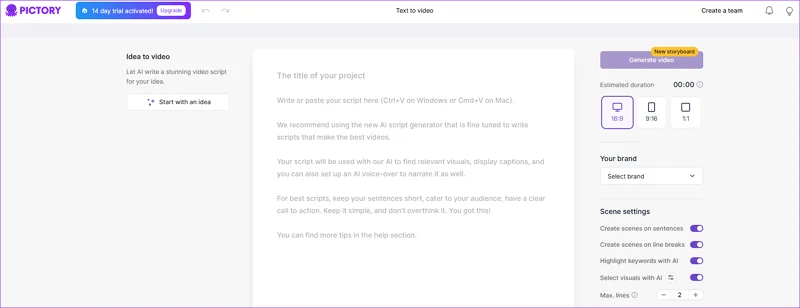
Key Features:
- Blog-to-video conversion.
- AI-driven voiceovers and captions.
- Custom branding options.
- Team collaboration tools.
Pros:
- Perfect for repurposing content.
- User-friendly for non-editors.
- Reliable customer support.
Cons:
- Limited creative control for complex edits.
- No free plan for stock media access.
Subscription Plans:
- Starter: $19/month (200 minutes, 1080p).
- Professional: $39/month (600 minutes).
- Team: $99/month (1,800 minutes).
Best For: Bloggers and podcasters repurposing content.
12. Descript
Descript redefines video editing by letting you tweak clips like a Word doc. Edit the transcript, and the video adjusts—perfect for podcasters or YouTubers. Its voice cloning and filler word removal make it a breeze to polish audio-driven videos for professional results.
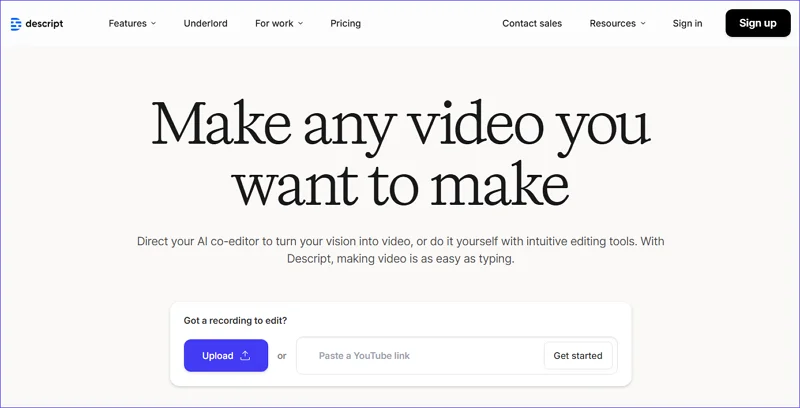
Key Features:
- Text-based video and audio editing.
- AI filler word removal.
- Voice cloning for custom narration.
- Automatic subtitles.
Pros:
- Intuitive for script-heavy projects.
- High-quality transcription.
- Great for podcast-to-video workflows.
Cons:
- Limited animation capabilities.
- Video features have a learning curve.
Subscription Plans:
- Free: 1 hour transcription, watermarked.
- Creator: $12/month (4K, 3 hours).
- Pro: $24/month (advanced features).
Best For: Podcasters and YouTubers creating polished video content.
FAQs
Check the FAQ section for more details.
Unlike Adobe Premiere or Final Cut, AI video generators automate the heavy lifting—creating visuals, adding voiceovers, or syncing audio—based on simple inputs like text or images. They’re faster and more beginner-friendly but may lack the pixel-perfect control pros need.
Many tools, like Runway, Sora, and Hailuo, offer free tiers with limited credits or watermarks. For watermark-free, high-volume use, you’ll need a paid plan, starting as low as $5/month (Kling AI) or $10/month (Pika).
InVideo, Pika, and Pictory are top picks for social media due to their templates, fast rendering, and platform-specific aspect ratios.
Yes, especially with tools like Sora, Veo 3, or Runway, which deliver 1080p or 4K visuals. However, quality depends on the prompt and tool—some may produce inconsistent results for complex scenes.
Final Thoughts
AI video generators have leveled the playing field, making professional video creation accessible to everyone. Whether you’re a marketer crafting Instagram Reels with InVideo, a filmmaker dreaming up cinematic shorts with Sora, or an educator building training modules with Synthesia, there’s a tool tailored to your vision. Each platform brings something unique—Runway’s creative control, Kling AI’s realism, or Descript’s text-based magic. Start with a free trial, play with prompts, and find the one that sparks your creativity. The future of video is here, and it’s yours to shape.
This version dives deeper into each tool’s personality, use cases, and updates, with a conversational tone that feels like a friend sharing their research. It’s optimized for SEO with semantic keywords (e.g., “video creation,” “AI-powered tools”) and avoids repetition from the previous article while covering a broad range of tools and needs. Let me know if you’d like tweaks or a specific focus!